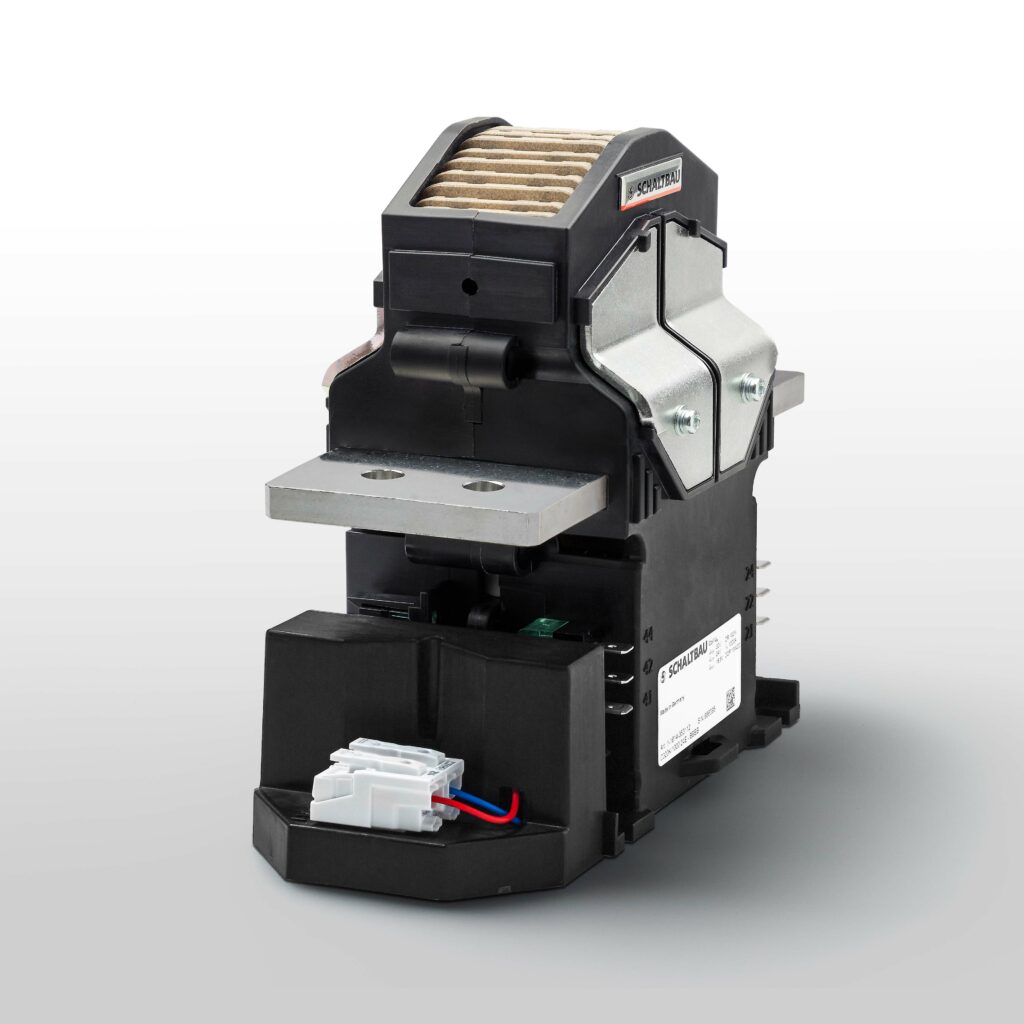Schaltbau launches arc-quenching high-current DC contactors

(Courtesy of Schaltbau)
Switching large direct currents safely and responsively is a critical task in EV drive systems, requiring electromagnetically controlled contactors that extinguish the unwanted arcs that inevitably form between the main contacts when they open (writes Peter Donaldson). Drawing on almost a century’s experience in the railway industry, German company Schaltbau is addressing this issue by offering a family of contactors for charging stations and large EVs, from mining trucks, road-going trucks and buses to smaller ones aimed at cars.
The C320, for example, is designed to be used in large vehicles, battery trains and high-power battery charging systems. It can carry currents of up to 1000 A and voltages of up to 1500 V. Because the device is bidirectional, the vehicle can not only accept power from the charger but also deliver power back to the grid, for example. Bidirectional contactors are also used in regenerative braking applications.
“The primary working parts are the main contacts, and at the bottom of the housing is the activation coil that operates the contact bridge,” application engineer Enrico Fischbach explains.
In this way, an electromagnetic switch uses a small current to control a much larger one, in a manner akin to solenoids and relays. The component that distinguishes high-current contactors from their relay and solenoid cousins is the arc chamber.
An arc is ignited between the contact surfaces as they open if the power is switched off while the system is under load. This happens because the current has sufficient voltage to ionise the surrounding air, and the plasma formed by heating the gas between the contacts to very high temperatures is conductive, so that the current continues to flow even though the contacts are open. Arc temperatures up to up to 20,000 K can be generated, which can damage the main contacts and the surrounding components.
The job of the arc chamber is to quench the arc by lengthening and cooling it using a combination of magnetic fields from permanent magnets and plastic or ceramic fins in a space of carefully calculated dimensions.
In the C320, the special design of the magnet system enables it to handle current flowing in either direction, sales manager Lars Schauerhammer says.
In adapting its railway contactor technology for automotive applications, Schaltbau had to optimise its size, weight and duty cycle. “Railway contactors with the same current capability are much bigger because they must be able to switch on and off all the time. But in renewable energy and e-mobility applications there is no need to do so as frequently. In this case you only need to switch off under load in case of an emergency,” Schauerhammer says.
The company is in discussion with several potential customers about new system designs, Schauerhammer says.
ONLINE PARTNERS































